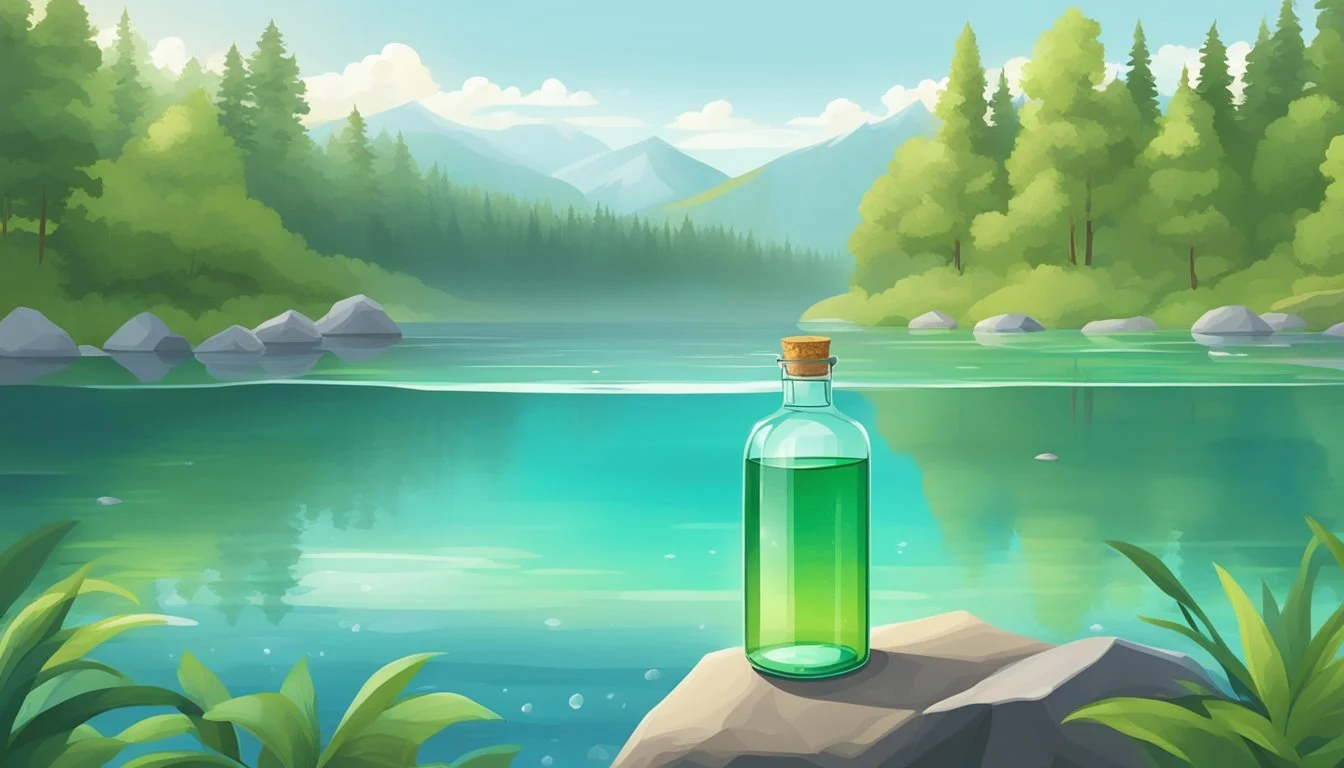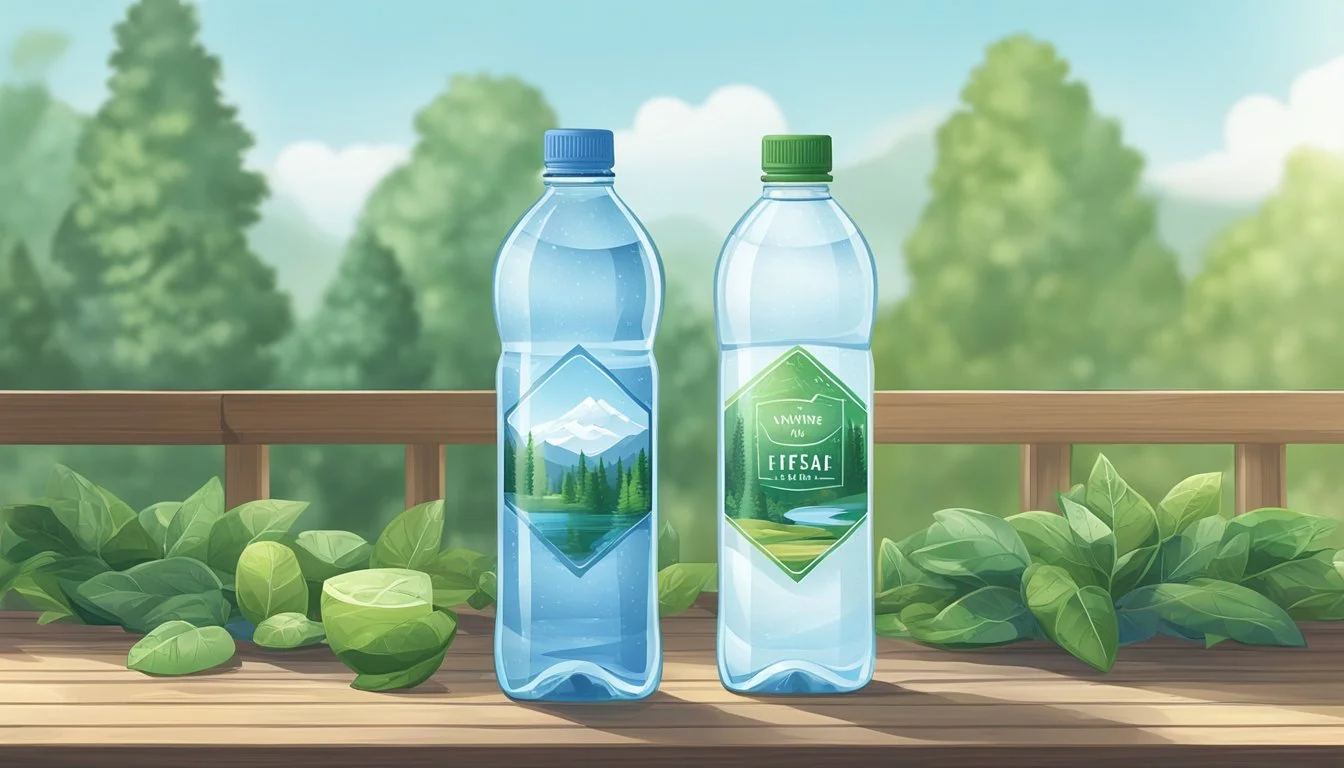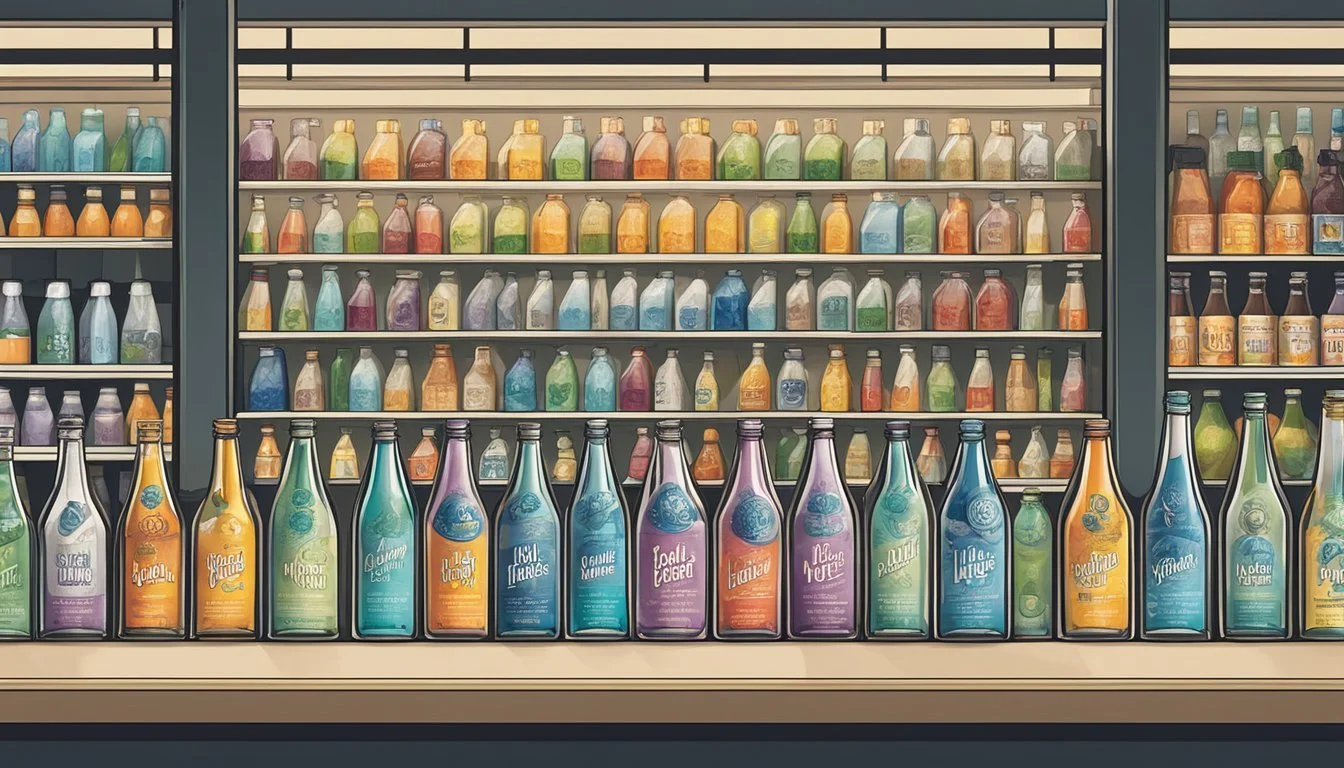LIFEWTR vs. Crystal Lake
Comparing Quality and Taste
Choosing the right bottled water can make a significant difference in daily hydration habits. LIFEWTR and Crystal Lake are two prominent brands in the market, each with its own set of qualities. While both seek to provide refreshing and pure experiences, they cater to different consumer preferences and needs.
LIFEWTR, known for its crisp taste and balanced pH levels, often appeals to those who prioritize a slightly acidic to neutral profile. Its packaging is also visually appealing, making it a popular choice among younger consumers. In contrast, Crystal Lake prides itself on a pure and reliable taste that avoids any unpleasant plastic aftertaste.
When deciding which is better, it ultimately depends on personal preference and health priorities. LIFEWTR offers a more aesthetically pleasing and modern hydration option, while Crystal Lake stands out for its consistency and clean taste. Both brands have their loyal followings, making them strong contenders in the bottled water market.
Understanding Bottled Water
Bottled water comes in various types and undergoes specific purification and filtration processes to ensure its safety and taste. It is regulated by stringent standards to guarantee the quality and hygiene of the product.
Types of Bottled Water
Bottled water can be classified into several categories:
Spring Water: Sourced from underground formations, naturally flowing to the surface.
Purified Water: Treated through processes like reverse osmosis, distillation, or deionization.
Mineral Water: Contains natural minerals and meets specific mineral content standards.
Sparkling Water: Carbonated to add effervescence.
Distilled Water: Boiled and condensed to remove impurities.
Each type offers unique characteristics, catering to different taste preferences and dietary needs. For example, mineral water is rich in essential minerals, while distilled water is often used for its purity in medical settings.
Purification and Filtration Processes
Various purification methods are employed to ensure bottled water is safe for consumption:
Reverse Osmosis: Uses a semipermeable membrane to remove contaminants and impurities.
Distillation: Involves boiling water to produce steam, which is then condensed back into a liquid, removing solids.
Filtration: Utilizes physical barriers or chemical processes to eliminate particles and pathogens.
Deionization: Removes mineral ions, resulting in very pure water.
These processes are regulated by the FDA and EPA, ensuring compliance with safety standards. Ensuring the removal of harmful contaminants while retaining beneficial electrolytes and minerals is paramount to delivering quality bottled water.
Comparative Analysis of LIFEWTR and Crystal Lake
When comparing LIFEWTR and Crystal Lake, key aspects such as the source and quality of water, taste and electrolyte enhancement, and packaging and environmental impact are essential.
Source and Quality of Water
LIFEWTR sources its water from public water systems and purifies it through reverse osmosis. This process ensures high purity, removing contaminants and providing a safe drinking experience. The water is also pH-balanced, with a pH level ranging from 6.4 to 7.4.
On the other hand, Crystal Lake sources its water from natural springs, maintaining the natural mineral content. This origin from natural springs often contributes to its perception as a more natural and less processed option, appealing to those who prioritize natural sources for their water.
Taste and Electrolyte Enhancement
LIFEWTR enhances its water with electrolytes, including potassium, magnesium, and calcium, which contribute to its crisp and clean taste. These minerals not only improve flavor but also offer health benefits related to hydration and replenishment.
Crystal Lake’s water, while naturally rich in minerals due to its spring source, does not have added electrolytes. Consequently, it may have a more natural and less processed taste. The flavor profile tends to feel smoother and less metallic compared to other waters, making it a well-liked option among natural spring water enthusiasts.
Packaging and Environmental Impact
LIFEWTR places a strong emphasis on environmentally friendly packaging. Their bottles are made from BPA-free plastic and are designed with visually appealing artwork to encourage recycling. The brand promotes sustainability through various environmental initiatives.
Crystal Lake also uses BPA-free plastic for its bottles, prioritizing consumer safety. While it might not have the same level of artistic design as LIFEWTR, the focus remains on ensuring the environmental impact is minimized. Both brands strive towards sustainability, but LIFEWTR's packaging is often seen as more innovative and visually engaging, potentially influencing consumer choices.
Health and Hydration
LIFEWTR and Crystal Lake are two competitors in the bottled water market, each with specific fohttps://youtu.be/2BWipcK3VLscuses on health and hydration. This comparison evaluates their efficiency in hydrational impact and the health benefits provided by their mineral contents.
Evaluating Hydration Efficiency
Hydration efficiency is critical when choosing bottled water. LIFEWTR boasts a pH range typically between 6.4 to 7.4. This slightly acidic to neutral range ensures the body maintains fluid balance effectively without introducing significant acidity or alkalinity.
Crystal Lake, known for its pure taste, ensures clean drinking water by undergoing rigorous purification processes. Both brands emphasize their commitment to providing consumers with water that supports hydration. Proper hydration aids in muscle function, nerve signaling, and overall health.
Minerals and Health Benefits
Mineral content in bottled water contributes to its health benefits. LIFEWTR often contains added electrolytes such as magnesium, calcium, and potassium. These minerals are essential for muscle function and maintaining fluid balance.
In contrast, Crystal Lake relies on its natural mineral composition derived from its source. Natural minerals found in Crystal Lake water can include calcium and magnesium, which support bone health and nerve function. Both brands provide options that can contribute to an individual's overall health, highlighting the importance of mineral content in their offerings.
Regulatory Standards and Safety
LIFEWTR and Crystal Lake bottled waters must adhere to stringent regulatory standards to ensure safety and quality. Key areas of focus include compliance with water quality and safety regulations and the attainment of specific certifications.
Water Quality and Safety Regulations
Bottled water is regulated under the jurisdiction of the Food and Drug Administration (FDA) in the United States.
These regulations mandate that bottled water meets standards for safety, quality, and labeling. The FDA's rules are often aligned with the Environmental Protection Agency (EPA) regulations that govern tap water.
Both LIFEWTR and Crystal Lake must regularly test for contaminants such as lead, heavy metals, and arsenic. These tests ensure that the water is free from harmful substances and safe for consumption. Moreover, companies must maintain records proving compliance to be readily available for FDA inspections.
Bottled Water Certifications
Certifications play a vital role in ensuring the quality and purity of bottled water.
Industry standards like the International Bottled Water Association (IBWA) certification or NSF International certification validate that the water production processes meet rigorous safety and quality benchmarks.
LIFEWTR, known for its purified water, typically boasts certifications that reflect its commitment to removing contaminants and maintaining high purity levels. Crystal Lake may also hold similar certifications, emphasizing its adherence to essential safety standards.
These certifications reassure consumers that they are choosing products that meet established health and safety criteria, enhancing trust in the brand.
Branding and Consumer Experience
LIFEWTR and Crystal Lake emphasize distinct elements in their branding and consumer strategies. They are noted for their unique design approaches and the impressions they leave on customers.
Packaging Design and Marketing
LIFEWTR is renowned for its art-driven packaging. Each bottle features limited-edition designs created by artists, highlighting PepsiCo's commitment to arts and creativity. This approach not only makes the bottles visually appealing but also positions the brand as modern and trendy.
Conversely, Crystal Lake opts for a more traditional design. Their bottles feature clear labeling, emphasizing purity and simplicity. This approach appeals to consumers who prefer a straightforward and classic look in their bottled water.
Both brands invest heavily in marketing. LIFEWTR often collaborates with artists and participates in events that celebrate creativity, which strengthens its image as an innovative brand. Crystal Lake focuses on reliability and quality, often highlighting its natural sourcing and purity in its campaigns.
Customer Preferences and Perceptions
Consumer preferences vary significantly between the two brands. LIFEWTR attracts a demographic that values aesthetic appeal and creativity. Its consumers appreciate the artistic designs and often perceive the brand as a lifestyle choice, not just a hydration option.
Crystal Lake, on the other hand, appeals to those who prioritize simplicity and tradition. Its straightforward packaging and focus on purity resonate with customers who seek a no-nonsense product that emphasizes quality.
Perceptions also play a vital role. LIFEWTR is frequently seen as a premium brand due to its artistic collaborations and high-profile marketing efforts. Crystal Lake is viewed as a reliable and quality-focused alternative, offering a sense of familiarity and trust.
Both brands have succeeded in carving out distinctive niches, catering to specific consumer segments with their unique branding strategies.
Market Position and Brand Overview
LIFEWTR and Crystal Lake are two notable players in the bottled water market, each with distinct brand positions and market strategies. This section provides a comprehensive look at the bottled water industry and detailed profiles of these two brands.
Bottled Water Industry Analysis
The bottled water industry has seen substantial growth over the past decade, driven by health-conscious consumers and the demand for convenient hydration. In 2024, the market size was estimated to be worth billions, with major brands like Dasani, Aquafina, Evian, Fiji, and SmartWater competing for market share.
Consumer preferences have shifted towards premium and mineral-enhanced waters, which offer perceived health benefits. As a result, premium brands like LIFEWTR and Crystal Lake have positioned themselves to capitalize on these trends.
Furthermore, market trends indicate a growing interest in environmental sustainability, prompting many brands to adopt more eco-friendly practices in their production and packaging processes. PepsiCo, the parent company of LIFEWTR, and other key players have been significantly focusing on this aspect to meet consumer demands.
Detailed Brand Profiles
LIFEWTR is a premium bottled water brand owned by PepsiCo. It is marketed for its purity and balanced pH levels ranging from 6.4 to 7.4, catering to both health-conscious and aesthetically-driven consumers. It's often positioned alongside other high-margin products in retail spaces to attract quality-focused buyers.
Crystal Lake, while not as widely recognized as some competitors, offers a strong presence in local markets. It emphasizes natural spring water sourced from pristine locations, appealing to consumers who prefer less processed, naturally sourced water. Despite lacking the marketing budget of giants like PepsiCo, Crystal Lake has garnered a loyal customer base through its authenticity and quality.
The brand reputation of LIFEWTR benefits significantly from PepsiCo's marketing power and wide distribution channels. In contrast, Crystal Lake's reputation is built organically through word-of-mouth and regional loyalty. Both brands occupy clear, distinct market segments, showing the diverse consumer demand in the bottled water industry.
These detailed profiles shed light on the unique positions each brand holds, demonstrating the variety and competition within the bottled water market.
Conclusion
When comparing LIFEWTR and Crystal Lake, consumer choice often hinges on a few key factors: taste, quality, and added health benefits.
LIFEWTR offers a pH level ranging from 6.4 to 7.4, which makes it slightly more acidic to neutral. It is fortified with electrolytes for taste. Many consumers appreciate its crisp, clean profile.
Crystal Lake also provides a refreshing and clean drinking experience. While specific details about its pH and mineral content are less marketed, it is often described as a dependable, high-quality option.
In terms of sustainability, it is important to consider the environmental impact. LIFEWTR's marketing emphasizes art and design but also advocates for recyclable packaging.
Crystal Lake might not emphasize design, but sustainability in packaging could be an area they excel in. Consumers looking for environmentally friendly choices should consider how the brands address these concerns.
Evaluating health benefits, both brands aim to provide quality hydration essential for daily wellness. LIFEWTR with its added electrolytes can be appealing for those needing extra replenishment.
Both brands present solid choices. LIFEWTR leans on its marketing and added electrolytes, making it a favorite for those looking for more than just hydration.
Meanwhile, Crystal Lake may attract those seeking straightforward refreshment without additional frills. Each brand has its unique strengths, leaving the final decision to personal preference and specific needs.
More About LIFEWTR
Icelandic Glacial vs LIFEWTR: Which Bottled Water is Better?
LIFEWTR vs Kirkland Signature: Which Bottled Water is Better?
LIFEWTR vs Mountain Valley Spring Water: Which Bottled Water is Better?
LIFEWTR vs Richard's Rainwater: Which Bottled Water is Better?
LIFEWTR vs Whole Foods Italian Still Mineral water: Which Bottled Water is Better?
More About Crystal Lake
Aqua Carpatica vs Crystal Lake: Which Bottled Water is Better?
Cascade Mountain vs Crystal Lake: Which Bottled Water is Better?
Core Hydration vs Crystal Lake: Which Bottled Water is Better?
Crystal Geyser vs Crystal Lake: Which Bottled Water is Better?
Crystal Lake vs Essence pH10: Which Bottled Water is Better?
Crystal Lake vs Proud Source: Which Bottled Water is Better?
Hawaii Volcanic vs Crystal Lake: Which Bottled Water is Better?
Hawaiian Springs vs Crystal Lake: Which Bottled Water is Better?
Ice Mountain vs Crystal Lake: Which Bottled Water is Better?
Icelandic Glacial vs Crystal Lake: Which Bottled Water is Better?
Kirkland Signature vs Crystal Lake: Which Bottled Water is Better?
Liquid Death vs Crystal Lake: Which Bottled Water is Better?
Mountain Valley Spring Water vs Crystal Lake: Which Bottled Water is Better?
Nestle Pure Life vs Crystal Lake: Which Bottled Water is Better?
Poland Spring vs Crystal Lake: Which Bottled Water is Better?
Purely Sedona vs Crystal Lake: Which Bottled Water is Better?
Richard's Rainwater vs Crystal Lake: Which Bottled Water is Better?
San Pellegrino vs Crystal Lake: Which Bottled Water is Better?
Simple Truth vs Crystal Lake: Which Bottled Water is Better?
Solan de Cabras vs Crystal Lake: Which Bottled Water is Better?
Talking Rain AQA vs Crystal Lake: Which Bottled Water is Better?
Whole Foods 365 vs Crystal Lake: Which Bottled Water is Better?
Whole Foods Italian Still Mineral water vs Crystal Lake: Which Bottled Water is Better?






